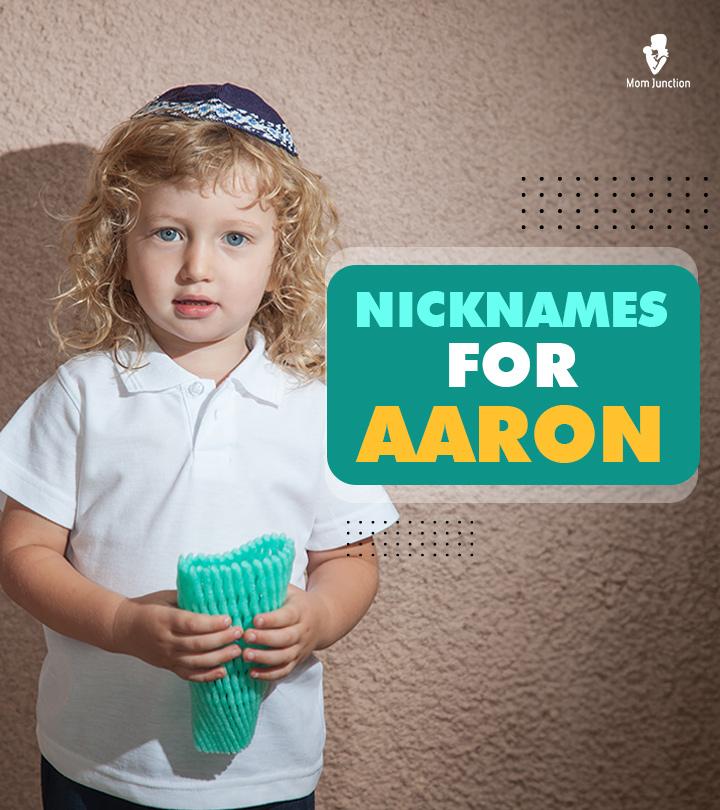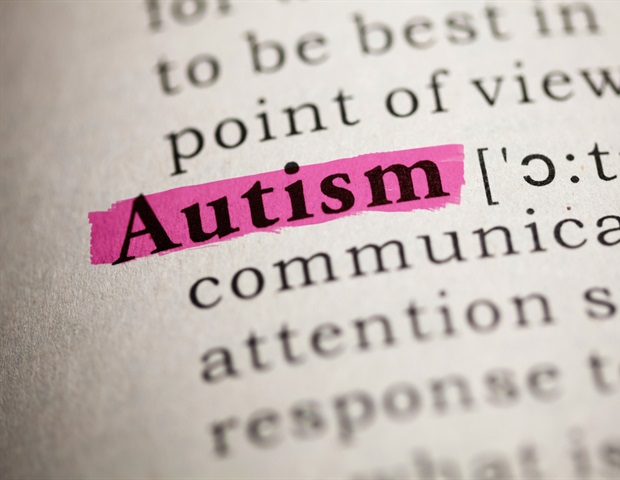As your child approaches the two-year mark, you’ll likely see an exciting combination of growth in language, motor skills, and social development. At 23 months old, your toddler is becoming more independent, assertive, and curious about the world around them. Being aware of major 23-month-old milestones will help you navigate their development with confidence and provide support. In this article, we’ll cover essential aspects of your 23-month-old’s expected milestones, their feeding and sleep schedules, and more.
Your child is refining many milestones at 23 months old, including motor, cognitive, and social skills. Here’s what you might expect:
At this stage, many 23-month-olds are becoming more coordinated and active. You might see your toddler begin to:1,2
- Run with more control: They may still be a bit wobbly, but running is becoming more steady. Your toddler may be able to come to a smooth stop from running without falling or bumping into something.
- Climb: Your toddler may climb up and down furniture or stairs with minimal help, such as only holding a railing or one hand.
- Jump: Jumping with both feet off the ground is a milestone many 23-month-olds will begin to attempt.
- Kick: Many 23-month-olds will soon be able to kick a ball or imitate you doing so, either by swinging their leg into the ball or by walking into it.
- Balance: They may be able to stand on one foot for a brief moment or balance themselves while playing. (I notice this skill in my own 23-month-old when she tries to step one leg into her pants without holding onto anything for balance.)
Your toddler’s fine motor skills are improving rapidly. At 23 months, they might:1
- Stack blocks: They can stack more blocks or cups (about six to eight) and love to build towers.
- Use utensils: They may feed themselves with a spoon or fork more neatly than before. You might notice they’re keeping their feeding utensils right-side-up more often so that less food spills off.
- Turn pages: Your child may be able to turn the pages of a book, even if they end up turning multiple pages at once.
- Twist at the wrist: Turning or twisting the lid off a jar, the knob of a door handle, or the wind-up of a toy is a fine motor skill that many 23-month-olds begin to master.
- Flip a switch: You might notice that your child shows the ability and interest in flipping light switches and turning other switches off and on.
- Draw: Scribbling (often in the form of circles or lines) with crayons or markers is a common activity at this age.
- Manipulate small objects: Expect your child to engage in more precise actions, like stringing beads or dry macaroni noodles onto a thread or yarn.
Your 23-month-old’s vocabulary is rapidly expanding. Many toddlers at this stage can:1,3,4
- Say 50-100 words: During toddlerhood, children acquire language quickly, and the number of words they use, speak, imitate, and understand may multiply by the day. They might also understand 200 or more words!
- Form phrases: Some might even start stringing two to three words together into short sentences, like “Eat cookie” or “Mommy help.”
- Follow instructions: 23-month-olds can often understand and act on basic requests like “Bring the ball” or “Give me the cup.” They may even begin to understand and complete two-step directions, such as “Take your coat off and place it on the hook.”
- Point to objects: They can identify and point to familiar objects and at least three to five body parts.
- Name objects: In addition to identifying or pointing to objects when you name them, your child might be able to pull the names of a few objects from their memory and recite them on their own when you point to them.
- Imitate speech: Your toddler may repeat words or phrases they hear, which helps grow their vocabulary.
- Use pronouns: At this age, toddlers often become increasingly possessive, evident by their use of words like “I,” “me,” “my,” and “mine.”
Social and Emotional Development
At 23 months, your child is becoming more aware of others and developing their emotional skills. They can:1,5
- Show empathy: They may comfort a crying friend or sibling or try to help others in distress. (My 23-month-old likes to remind my almost 4-year-old to take deep breaths when she’s upset or crying!)
- Engage in pretend play: Your toddler may care for dolls or stuffed animals by feeding, burping, and rocking them as well as changing their clothes and diapers. They may pretend to be on the phone, work on a computer, cook food, or do any number of activities they see you doing!
- Engage in parallel play: Your toddler may play next to other children and copy what they see, but they won’t likely play with other children their age. This is normal and called parallel play.19
- Imitate adults: Many 23-month-olds like to copy your daily activities, such as combing their hair, shaving, sweeping, or cleaning.
- Assert independence: They may say “no” more often or show frustration when they don’t get their way. This is a normal part of asserting autonomy.
Witnessing your toddler’s brain work and develop is quite impressive. Here are some skills they may demonstrate at 23 months:1
- Steering: When pushing a toy on wheels (such as a wagon, stroller, or cart), your child may be able to steer it around objects and back out of corners to avoid getting stuck.
- Dumping: Toddlers at this age start to understand gravity and demonstrate this by flipping over a cup or bottle to dump out something like a crumb, Cheerio, or tub of Legos.
- Drawing: Your toddler may begin to understand how a pen, marker, crayon, or pencil works and use it to draw a line on paper.
- Sorting and organizing: Your child may start to put things where they belong, such as placing toys on the shelf, a cup in the kitchen, and a blanket on the bed.
- Innovation: Your toddler may demonstrate problem-solving by grabbing a stool or other elevated object to help them see or reach items and surfaces they otherwise can’t. (My 23-month-old runs to the bathroom to grab her stool to reach for snacks in the pantry or see what I’m doing on the kitchen counter.)
At 23 months old, your toddler should eat a wide variety of solid foods, though picky eating is still common. A typical 23-month-old feeding schedule includes:
- Three meals a day: This consists of breakfast, lunch, and dinner with a variety of foods.6
- Two snacks a day: This consists of mid-morning and afternoon snacks.6
- Nutrient-rich foods: Your child should be eating a balanced diet that may resemble your own. They should get protein (like meat and beans), healthy fats (like dairy and oils), fruits and vegetables, and whole grains.7
It can be stressful to ensure your child is getting enough of the right calories and nutrients day to day; however, you shouldn’t force them to finish the food on their plate. Offer a variety of healthy options, then follow their lead. Pay attention to their hunger and fullness cues, and reassure yourself that it’s more about the nutrients they get over the course of a week than in one meal or even one full day.8

A sample meal plan for a 23-month-old might look something like this:
7:30 a.m.
Breakfast: Oatmeal with berries and peanut butter
10:00 a.m.
Morning snack: Thinly sliced apple with cheese slices
12:00 p.m.
Lunch: Turkey and avocado sandwich on whole-grain bread, cucumber slices, and quartered grapes
3:00 p.m.
Afternoon snack: Whole-grain crackers or pretzels and hummus
5:30 p.m.
Dinner: Ground beef tacos with shredded cheese in a corn tortilla and bell pepper slices or cut-up cherry tomatoes on the side
I typically try to offer my 23-month-old a version of whatever I’m eating on a given day. For instance, if I’m making tacos for the family, I may serve “deconstructed” tacos to my toddler so that it’s easier for her to eat, but I usually try not to make her a separate meal.
Sleep typically improves throughout toddlerhood, but it can be a bit unpredictable at this age. Some toddlers may experience a 23-month sleep regression, resulting in more nighttime awakenings, difficulty falling asleep, or earlier-than-usual wakeups. This regression can be due to developmental leaps such as language growth, social awareness, newfound fears, separation anxiety, or increased physical activity.
Sometimes, illness, travel, changes in routine, teething, or stress can also cause sleep regressions. If your child is going through a 23-month sleep regression, consistency is key. Stick to your usual sleep routine, and ensure they have a calming environment for sleep (dim lights, no screen time before bed, etc.). Over time, their sleep patterns should stabilize.9
On average, a 23-month-old needs about 10-14 hours of total sleep per day, including a one- to three-hour nap in the afternoon. However, sleep needs vary from person to person. Here’s an example of a 23-month-old sleep schedule:9
7:00 a.m.
Daily wake up
1:00 p.m.
Naptime
3:00 p.m.
Nap wake up
7:30 p.m.
Bedtime

Establishing a daily routine can help your 23-month-old feel secure and give them a predictable structure. It doesn’t have to be elaborate — just consistent. To build your schedule or routine, start with things you already do and put them in an order that makes sense for your family.10 Here’s an example of what a typical day might look like for a 23-month-old:
7:00 a.m.
Wake up, diaper change, get dressed
7:30 a.m.
Breakfast and clean up
8:30 a.m.
Free play
9:00 a.m.
Visit the playground or playdate
10:00 a.m.
Morning snack
10:30 a.m.
Storytime or music class
12:00 p.m.
Lunch
1:00 p.m.
Nap
3:00 p.m.
Afternoon snack
3:30 p.m.
Arts and crafts or building blocks
5:30 p.m.
Dinner and clean-up
6:30 p.m.
Bath time
7:00 p.m.
Bedtime routine (Example: Apply cream or lotion with a massage, put on pajamas, brush teeth, read a story, rock in a chair and sing a lullaby, then put them down for bed)
7:30 p.m.
Bedtime
Each toddler and family is unique, so feel free to adjust the schedule as needed. However it looks, a predictable rhythm can help your child feel confident and secure.10
At 23 months, your toddler is still building immunity, and you may notice them dealing with common illnesses. Always consult your pediatrician if you’re concerned about your child’s health or notice any unusual symptoms. You can prevent many children’s health concerns with thorough and frequent handwashing, so teach and encourage your 23-month-old to wash their hands!12
Here are a few health concerns to keep an eye on:
If your child’s forehead temperature exceeds 100.4 degrees F and persists for more than a few days, consult your pediatrician. Otherwise, many fevers are the result of a viral infection, and antibiotics from your doctor won’t help. Fevers can actually help to fight illnesses faster, but if your child is obviously uncomfortable, you can treat it with ibuprofen or acetaminophen with a dosage recommended by your pediatrician. Lukewarm baths, popsicles, and cuddles can all help your child feel better with a fever.11,20
2. Dehydration and Gastroenteritis
Dehydration can happen if your child isn’t consuming enough fluids due to a lack of appetite or if they’re losing more fluids than normal due to fever, vomiting, or diarrhea. When your child is sick, be sure to offer them sips of water and oral rehydration like Pedialyte often. If they refuse fluids or have significantly fewer wet diapers, cry without tears, or have dry lips and mucous membranes, seek guidance from your pediatrician.11,21,22,23
A stomach bug is another common cause of dehydration in toddlers because vomiting and diarrhea can quickly deplete their fluid and electrolyte stores. Bacteria or viruses that enter the body through the mouth can cause stomach bugs. If vomiting or diarrhea lasts more than seven to 10 days or your child shows signs of dehydration, you should contact their pediatrician. They may recommend a visit to the hospital for rehydration.12,24
Hundreds of viruses can cause cold symptoms in toddlers, so you can expect your little one to have eight or more colds per year. This annual tally gradually decreases as they get exposed to more viruses and build immunity. Cold symptoms like a runny nose, cough, and sore throat can last between five and 14 days. Decongestants aren’t recommended for children under 6, but acetaminophen or ibuprofen can help treat discomfort.13,25,26
Sometimes, colds can also cause an earache from fluid buildup in the ears. Antibiotics don’t help viral earaches, but you can administer acetaminophen or ibuprofen for the pain. If an earache persists for days more than the cold itself, a secondary bacterial infection may have developed, and only then might your child need antibiotics.13,27

At 23 months, toddlers love engaging in activities that promote their physical, cognitive, and social development. Here are some great activities to try:
- Obstacle course: Build an obstacle course for your child to incorporate the gross motor skills they’re working on, such as balancing, jumping, climbing, and running. You can get creative and use items around the house, such as pillows, furniture, etc.1,2
- Building blocks: Stacking blocks helps develop hand-eye coordination and problem-solving skills. While building, you can also talk about the colors and other properties of the blocks to help promote language and learning.1
- Pretend play: Toddlers at this age love pretending — whether it’s playing “house,” pretending to cook, or playing “grocery store.” Consider adding a play kitchen, baby doll, shopping cart, or cash register to your child’s play space and participating in their pretend play.1
- Outdoor play: Running, climbing on a playground, and playing ball games can help your child develop gross motor skills.1,2 Additionally, outdoor play and exposure to natural sunlight can help regulate their sleep cycle.14
When planning activities for your 23-month-old, the goal is to offer a mix of opportunities to challenge your toddler’s growing skills, assist in reaching their developmental milestones, and allow for creativity and imagination!
As your 23-month-old becomes more mobile and curious, ensuring their safety at home is crucial. Here are some key safety tips to follow:
Choking is one of the leading causes of death in toddlers. Children can choke on both food and non-food items. Here are some tips for food choking prevention:15
- Cut round and hard foods into small bites.
- Spread sticky foods (like peanut butter) thin.
- Refrain from offering gum or hard candy to your toddler.
- Make sure your child sits still and upright when eating.
- Always supervise meals and snacks.
You should also be mindful of toy, game, and household object choking hazards. (My older daughter loves to play with Polly Pockets, but my 23-month-old can’t help herself from putting them in her mouth!) It’s important to keep small items out of reach and always supervise your children’s play.15
Your 23-month-old’s curiosity puts them at a high risk for burns. They can get burned from hot appliances, water, pans, outlets, and even the bathtub. To prevent burns:16
- Keep hot objects (like stoves, heaters, and irons) out of reach.
- Don’t allow your child to use a stool near the stovetop.
- Set your hot water heater to 120 F, and always test the bathwater temperature before placing your child in it.
- Use outlet covers so your child can’t stick their finger(s) or other objects in an outlet.
If your toddler does get burned, run or soak the area in cold water without ice for 20 minutes. Don’t apply any home remedies such as toothpaste or eggs. After cooling the area, you can apply an antibiotic ointment and loosely dress with a bandage or gauze. If the burn appears to be deep or is on an area like the face, hands, or genitals, contact your pediatrician or take your child to your local hospital.16,28
As your toddler becomes more mobile, quick, and adventurous, they may begin to take more gambles. Be mindful of these common fall risks to help protect them from injury:17
- Use baby gates at the top and bottom of the stairs.
- Secure heavy furniture to walls.
- Cover sharp furniture edges with bumpers.
- Always strap your child into highchairs and changing tables, and stay within arm’s reach.
Toddler falls are inevitable, but you can prevent most serious injuries from falling with supervision and proper toddler-proofing.17
A toddler can drown in 10 seconds or less in just a few inches of water. Take the following precautions to prevent drowning:18
- Always supervise your child around water, even in small amounts.
- Be aware of pools, bathtubs, toilets, and buckets.
- Keep the bathroom door closed and the toilet lid shut.
- Consider teaching your child to swim.
- Fence in your pool and install alarms.
The idea of drowning can be scary, but with proper attention and supervision, it’s preventable! Childproofing your home and constantly supervising your toddler while around water will help reduce risks.
Your 23-month-old is at an exciting stage of growth and development, from mastering new words to gaining better control of their movements. Understanding key 23-month-old milestones and tailoring their feeding, sleep, and activities to meet them can keep your child on track. Always keep safety at the forefront and make time for fun, engaging activities that will support your toddler’s continuing development.

 PARENTING TIPS
PARENTING TIPS







 PREGNANCY
PREGNANCY








 BABY CARE
BABY CARE








 TODDLERS
TODDLERS








 TEENS
TEENS








 HEALTH CARE
HEALTH CARE






 ACTIVITIES & CRAFTS
ACTIVITIES & CRAFTS








 CONTACT
CONTACT ABOUT
ABOUT